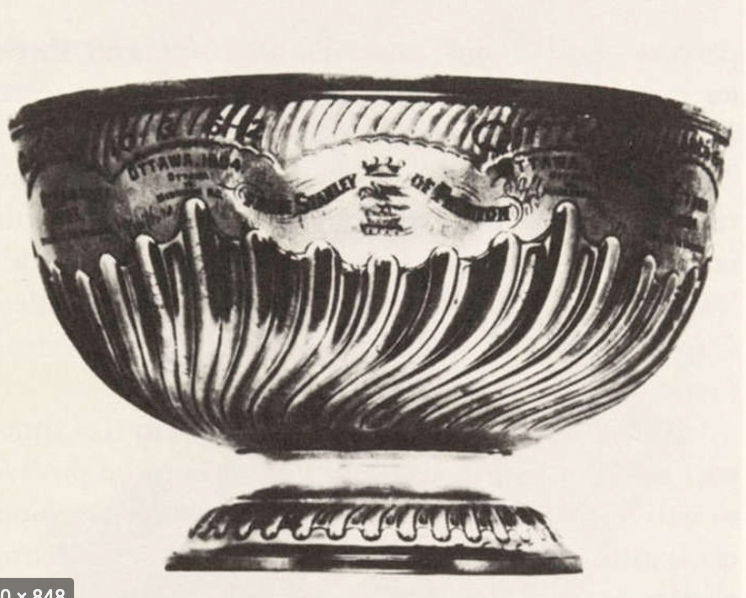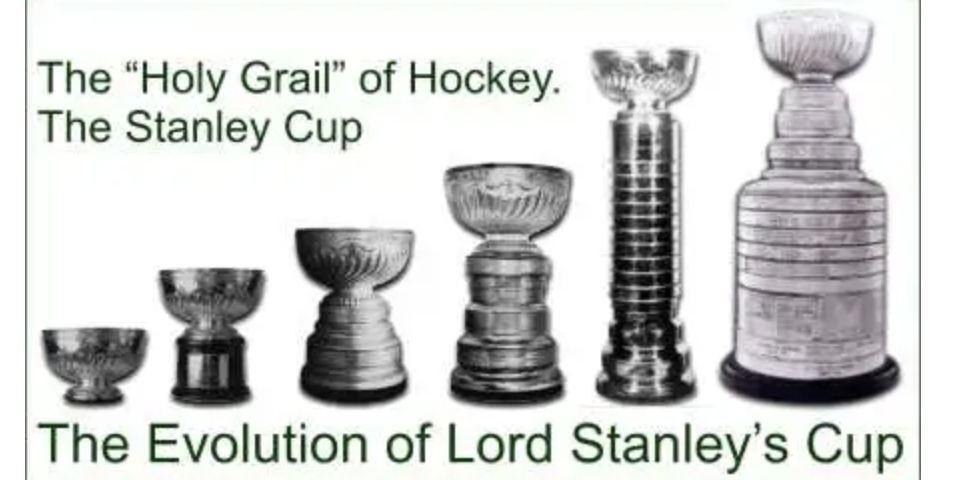Lord Stanley’s Cup. The Holy Grail. The Cup. Lord Stanley’s Mug.
The Stanley Cup is one of sport's most coveted trophies. It has been a cereal and dog bowl, a baptismal pool, and despite being peed and pooped in (thank you, Kris Draper’s daughter), it is still most commonly used as a drinking vessel for the champions to guzzle champagne. It is one of the oldest existing trophies awarded to a professional sports team. Because of its history, tradition, the blood, sweat, tears, and not to mention the broken bones it takes to actually win the damn thing, it is the best prize in all of sports. But for all of that, who the hell was Lord Stanely anyways?
Frederick Arthur Stanley was the 16th Earl of Derby, thus deserving the noble title of “Lord.” He served as a Conservative Party politician in England and was appointed Governor General of Canada from 1888-1893. While in Canada, he traveled widely and discovered the natural beauty of the landscape, becoming an avid fisherman, with his sons and daughters becoming enthralled with ice hockey. Due to their enthusiasm, Lord and Lady Stanley became hockey fans, attending games at Rideau Rink, one of Canada’s first indoor ice arenas.
The Dominion Hockey Challenge Cup
In 1892, Stanley donated what was originally known as the Dominion Hockey Challenge Cup to be awarded to Canada’s best amateur hockey club. Made of silver in Sheffield, England, it looked like a decorative punch bowl at 7” high and cost Lord Stanley 10 guineas, equivalent to $1,500 today (that is less than the cost of Avs’ Stanley Cup Final ticket). This would eventually be renamed the Stanley Cup.
It was first awarded to the Montreal Hockey Club in 1893, and by 1909 became used for professional clubs only, and has solely been used by the NHL since 1926. Though the NHL doesn’t officially own the Cup, they are allowed to use it by the terms set upon by the Canadian trustees that have been in charge of the Cup since its commission.
The Stovepipe Cup
Unlike other sports, a new trophy is not made every year. Instead, the champion’s names are engraved on the lower bands of the Cup, and it is held by the winners until a new champion is crowned the following season. Between 1924-1940 a new band was added nearly every year, earning the nickname of the “Stovepipe Cup” after its likeness. In 1947, the size was reduced, and in 1958 the current five-band base was introduced with 13 winning teams added per band. Once the band is filled, a new band is added to the base, with the top band being removed and placed in the Hockey Hall of Fame. In theory, the first winning team engraved on a new band would be on the Cup for the next 65 years.
By the 1960s, the Cup started showing signs of age and was deemed too brittle to continue to use, and a replica was commissioned. The original bowl was retired to the Hockey Hall of Fame, and the new Cup became known as the Presentation Cup. Made of a silver and nickel alloy, and topped with a replica of the original bowl, which can hold up to 14 cans of beer. It is 35” high and weighs 34.5 lbs. This is the Cup that is still used today.
The entire active team roster, coaching staff, management, and club staff get their names etched on the Cup, and over the years, there have been numerous spelling errors. Dickey Moore of the Montreal Canadians won the Cup six times, and his name is spelled five different ways. In 1981 the New York Islanders is spelled “Ilanders,” and the first time a spelling error was corrected was in 1996 for Avs’ Adam Deadmarsh, spelled “DeadmarCh.”
Today, each winning team member gets an individual day with the cup, a tradition that only started in 1995 with the New Jersey Devils. The Cup’s first international journey across the Atlantic was with Peter Forsberg in 1996 to his native Sweden. Since then, the Cup has become the most traveled championship trophy in the world and more well-traveled than most humans. The Stanley Cup is always accompanied by a member of the Hockey Hall of fame. The current “Keeper of the Cup” is Phil Pritchard, easily recognized by his white gloves and blond mullet. He has had the position since the 80s, hence the mullet he seems to have a hard time letting go of, and entered the job before the precedent of the player’s day with the Cup. He now can accompany the Cup up to 300 days a year traveling.
With the Cup’s busy travel schedule, even before the days of its international jet-setting, the Cup is often used at various events throughout the year, and in 1983 a “Permanent Cup” was commissioned so that they would always be a Cup at the Hockey Hall of Fame. The identifiable difference between the Presentation and the Permanent Cup is that the Permanent Cup has the spelling errors corrected. So just like Mickey Mouse, there is more than one Stanley Cup. There are three, but there are certainly more than three Mickies.
Since 1914, the Stanley Cup has been won 106 times by 20 active NHL teams and only wasn’t awarded in 1919 during the Spanish Influenza and the lockout in 2005. There have been more than 3,000 names engraved on the Cup, with over 1,300 players. A new band was added for the 2017-18 season, which will be complete in the 2029-30 season.
It has been burned more than once, forgotten on the side of the highway, locked in a car, tossed in Patrick Roy’s pool to test buoyancy (spoiler: it didn't float), and most recently dented by Aube-Kuble before it even left the ice in Tampa. Truthfully, I’m surprised there are only three Stanley Cups with the abuse it has endured in the past 130 years. But that is one of the qualities that make the Cup unique: like its players, it is resilient.
Winning a championship is great; you’re the best, and everyone likes being the best. However, hoisting the Stanley Cup is more than claiming a team’s supremacy. It is entering a part of history. For the next 60 years, the names of Landeskog, MacKinnon, and Makar will be physically passed around long after their careers on the ice have ended. The Stanley Cup is a living history with traditions that started well before most of the current players were born, and with each dent, misspelling, and misadventure, the Cup only gets more illustrious.
The Avalanche may be the 2022 Stanley Cup Champions, but the Cup doesn’t belong to us, we are merely it’s keeper for a short period of the Cup’s history. As Avs fans, we are lucky enough to be part of that history for the third time, and hopefully a fourth.
The Holy Grail is said to give man immortality, and while those who have won the Cup won’t live forever, as long as there is a Hockey Hall of Fame, their names and memories will live on.



